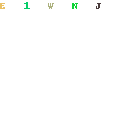The second installment of work-related comments I just can’t forget

Last month, as you may recall, I posted a list of some of the more egregious comments made to me over the course of my career, in an effort to get them out of my head. It worked, insofar as it seemed to get rid of those particular earworms. Unfortunately, it got me thinking – and I ended up with a raft of new earworms.
So here is Volume II. Let’s hope there isn’t a Volume III.
1993
My boss, upon being asked by me to stop staring at my chest:
“It’s not my fault. If you put them out there, it’s your fault if everyone looks.”
(I was wearing a black turtleneck at the time)
1996
Gary Prouk:
“You’re a sarcastic little vixen, aren’t you?”
1997
A client in the automotive industry:
“Am I going to have to come up there and bitchslap you?”
1998
Account Director at the ad agency where I worked; officially my boss:
“They say that when 3 people at an agency don’t like you, it’s time to leave. David, Suzanne and I are your 3.”
1998
Art director, when we were alone in a recording studio, while caressing my hand:
“You have beautiful hands. You should be a hand model.”
(I found out later he said this to almost every other woman in the agency)
1999
Incoming new president at same agency as above:
“I wanted to fire you, but the VP Finance says you make a lot of money for us and your clients tell me they like you a lot, so I won’t.”
2001
A recruiter who called me out of the blue, upon being told that I wasn’t interested in the job she was offering because it was too junior and the salary less than I was making:
“Well, I’ve looked at your resume, and I don’t think you’re worth nearly that much. You’re pretty lucky you got that job – you haven’t earned it.”
2003
Senior salesperson:
“You know why you’d be good in sales? Because you’re a 7 [out of 10]. Good-looking enough to sell to men, but not so pretty that they’d think you’re a bimbo.”
2008
Senior leadership team member, in front of both our bosses:
“Ugh – why do you keep calling it ‘social networking’? It’s not networking. I hate it when you make up these terms that no one else has heard of.”
2010
Co-worker, upon reading an article I wrote for an industry journal:
“I mean, it’s written like a real article, by a real writer. I didn’t know you could do that. How did you do that?”





